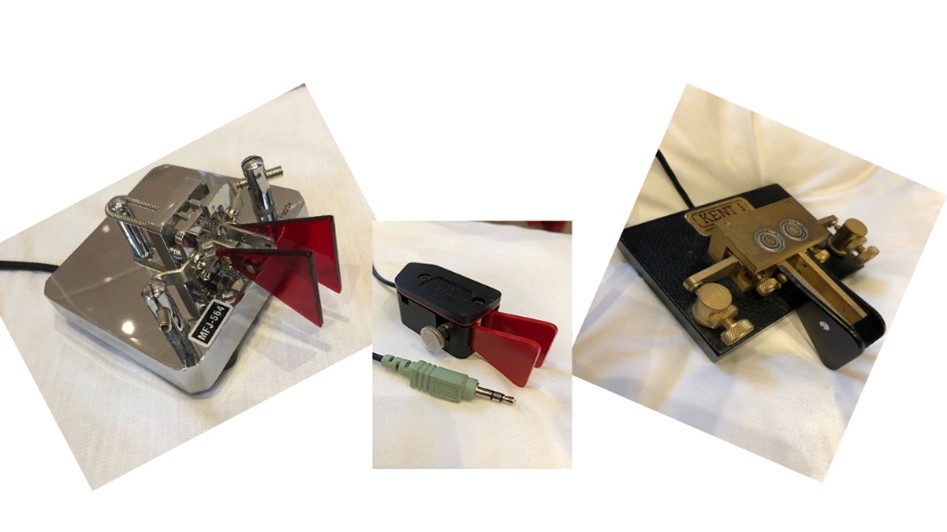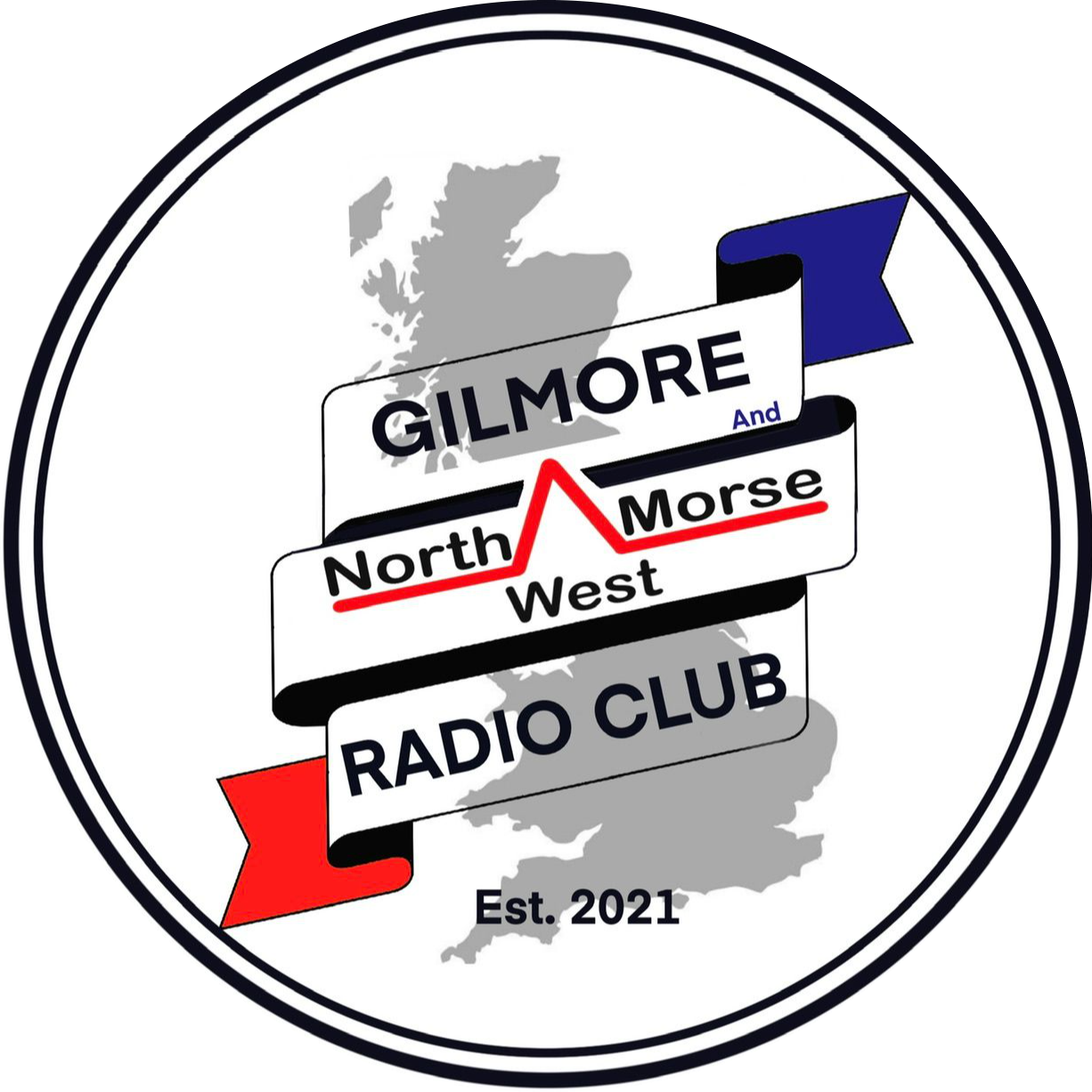
Welcome to the second CW Corner News in the friendly Gilmore Radio Club. Hope members enjoyed the first CW Corner News and feedback is always welcome by GRC Group email posts. What will you find in this second CW Corner News? Here’s the agenda.
- How do you get started in CW? – the most common question I’m asked
- Suggested CW training websites – here are some recommendations
- The first steps in the CW learning process
- The Gilmore Radio Club CW Quiz Number 2
- In Next CW Corner News
- And Finally – Would you like to help in the CW net team?
How do you get started in CW?
Licensed amateurs and non-amateurs ask this question quite often. Of course, for non-amateurs the first suggestion is that they first look on the RSGB website for licence guidance.
For a licensed amateur, then the suggestion for a complete beginner might be to get hold of a low cost morse key to use as a single switch with an audio oscillator, and try out practice CW keying. Straight “Up and Down” keys and oscillators are advertised on sites such as eBay relatively cheaply.
This practice introduces them to the idea of sending audio tone Dahs and a Dits, with the Dahs about three times as long as the Dits. If still interested, I encourage them to get a low cost paddle to start on the CW learning road. I explain that the paddle has two switches, one used to create dits and the other to create dahs, with the paddle wired to a 3.5mm jack plug, to be plugged into a rig with an electronic keyer, or into a practice electronic keyer with an audio tone sounder.
Today most rigs do have a built in electronic keyer, with a key socket for either a paddle or a straight key. The Op selects the key type in rig settings, and can key the rig to practice CW by ensuring the Break (BK) setting is off.
The great benefit of using a paddle is that the rig keyer automatically sets the dahs at 3 times longer than dits, leaving the user to concentrate on keying. The rig can be set for required CW keying speed.
Learning CW is not easy for most people and it takes practice – lots and lots of practice. Most people CAN learn CW with commitment practice and a positive attitude.

Using free online CW learning recourses can help in this process be a very effective way to learn CW. Here are some tips on useful websites.
Suggested CW training websites
If you are looking to learn or relearn CW, all these websites offer beginners and more advanced CW learning, all free, but you will also need to do lots of practice as you progress. All offer a free CW learning account, have nothing to install, and are accessible on most devices with internet access.
1. Learn CW Online at https://lcwo.net/
Long established, 40 beginners lessons, lots of exercises, choice of Koch or Farnsworth learning methods, graphical progress tracking.
2. Morsecode World at https://morsecode.world/
Recently established, follows CW Ops Beginners course of 13 sessions, can customise exercises, good progress tracking, head copy focus.
3. Morse Code Ninja at https://morsecode.ninja/
Recently established, very unique, lots of practice exercises online and downloadable, variable speeds, links to Youtube videos of practice sessions, listening and head copy focus.
There are also many other excellent CW learning websites such as Lockdown Morse, which is a Youtube based series of 18 learning videos. Head Copy focus.
The first steps in the CW learning process
Starting to learn CW is all about learning the CW sound pattern for each character. We do this by listening to the CW pattern of individual characters, many times. We start with letters of the alphabet, and add the numbers, and add the prosigns (special symbols such as ? and /). There are around 46 such sound patterns to learn in total. This is the HARD SLOG – but it is worth it!
Most CW learning programmes start with the characters with the shortest code, such as one Dit for “e” and one Dah for “t”, and then a DitDah for “a” and a DahDit for “n” and so on.
Listening to the CW sound pattern for a character, repeatedly, helps you memorise and embed the character’s sound pattern in your brain’s subconscious. Once there, when you hear the CW sound pattern, you can recall the character instantly – hence the term “Instant Character Recognition” or ICR.
The key to learning CW is lots of regular practice listening to CW characters, and the aim is ICR. A little practice every day when you are not tired is far better than missing several days and then doing a lengthy practice all at once to catch up.
If you find you cannot recall a character instantly when you hear the CW for that character– you need to practice that character more. Everyone learning CW goes through this experience! Doing this, you gradually reduce the characters you miss.
For example listening to the letter “D”, we should hear DahDitDit and the aim is to recognise this single sound pattern as “D”. This will only happen with lots of CW listening practice, but it will happen.
If we hear the CW too slowly, for example as Dah then Dit then Dit, the brain hears each Dah or Dit separately, and checks its memory for the Dah and Dit combination, to figure out that this means “D”.
We refer to this extra figuring out by the brain, as using a lookup table to find the correct character. Learning CW this way can cause an upper speed limit in your ability to copy CW, as the brain can only do this figuring out up to a certain speed.
Learning CW by first memorising each character CW sound pattern at a relatively fast CW speed has no such recall limitations.
This is why most CW learning programmes start you listening to CW at a relatively fast character speed but with longer gaps between characters and words. Then as the learning progresses, the gaps reduce.
In my experience this does work!
The Gilmore Radio Club CW Quiz
Answers to quiz questions in CW Corner newsletter 1
Question 1) Name three common types of morse code keys. : Answer is Straight key (Up and Down Key); paddle; bug key.
Question 2) What three letters did the Titanic send in morse code, in the first distress call? :Answer is CQD, meaning “Seek You, Distress” SOS was not universally is use until later.
Question 3) In what year was the first successful transatlantic morse code sent by radio: Answer is 1901, Cornwall to Newfoundland, Canada.
Quiz questions in CW Corner newsletter 2
Can you answer all three questions? The answers are hidden elsewhere in this newsletter and will also be in the next Newsletter.
Question 4) Name the person who also played a key part in developing morse code, as well as Samuel Morse?
Question 5) Can an op listening on a 2m FM only transceiver , listen to a 2m CW net? Please explain briefly.
Question 6) What does “Zero Beat” mean in relation to receiving a CW signal? Please explain briefly.
In Next CW Corner Newsletter
In the next issue we will include these topics:
– How do you actually achieve “Instant Character Recognition” in CW?
– Can you “give up” on learning CW and live to fight another CW day?
And Finally – Would you like to help in the CW net team?
Would you like to join with me David M0WDD, Keith M0JYP and Jamie M1JSC in developing this exciting GRC CW net? We need help such as arranging and running a club demo of paddles and keys, and to offer support for other members who are starting out in or returning to CW. Please email if interested.
Until next time, best wishes to all from David M0WDD
